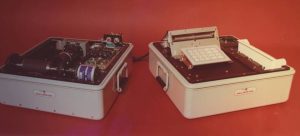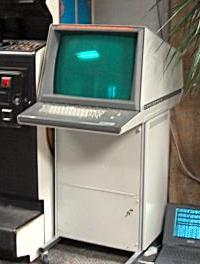Drill Stem Test (DST) Transmission System
The FreightMaster Section was part of the Mechanical Research and Development Department (MRD) of Haliburton Services. One of the guys [Doug] in MRD had recently received company funding for an important new Drill Stem Test (DST) computer project. He went to our Department Manager to ask for personnel to run his project. Doug had done the investigative work, ordered equipment and sold the project to management. I believe he was told he would be working for me rather than leading the project himself. I do not know details but that meeting ended with our Department Manager telling him to “pack his stuff.”
Shortly thereafter, I was called into the Manager’s office and asked to run the DST project. The project was incredibly important to the company. When the topic of personnel came up, I was given a list of names of nearly 20 Engineers and told to “choose four.” The assignment was a lateral transfer for me and not a promotion. I was, however, now the leader of a dream team of the brightest people in the department. Three of the four new team members had PhDs in Mechanical Engineering and George, my right-hand-man, had an MS in Computer Science. We later employed additional technical people including a mechanical engineer, an electronics engineer and additional programmers. Some of these were outside contractors. This was truly a Dream Team put together specifically for this project.
To learn more about the details, see DST Details.
A Drill Stem Test DST is basically a way to test an oil and gas well by performing a transient response on the producing formation. It is also a temporary completion of the well while the drilling rig
Our team quickly realized that none of us had the experience necessary to quickly design and build such a scanner. We located a “think tank” organization named Teknekron in Berkeley, CA that had experience in pattern recognition and scanning. We contracted with them to develop a scanner for use in the system. Over the course of the development, I made 13 trips to Teknekron and Berkeley to follow the development.
One funny incident happened when we all went to lunch at a restaurant in Berkeley. There were about six of us in our party. Each of us was in a coat and tie. We were not accustomed to the street scene in Berkeley. There was a man with a table on the street selling jewelry from a table on the sidewalk. When he saw us, he looked up and exclaimed “the Conservatives have arrived.” At that instant it occurred to me that we were the curiosity, not the people on the street.
Eventually, Teknekron produced a prototype. This prototype was over 2-feet by 2-feet and 1.5 feet high. It weighed well over 200 pounds. It was also had custom-designed circuit boards with a Texas Instrument computer chip. We did not like the weight, size and design of the prototype but we did like the data compression that was written into the software.
After we took delivery of the Teknekron prototype, we decided to discard, (ie throw away) the prototype and to build our own. We developed a new design that separated the reader to fit in two military aluminum cases which we referred to as the “two-box reader.” We also changed the computer to the LSI-11 circuit board computers and translated the one-for-One assembler code to match. Moreover, this meant that major components would be off-the-shelf components rather than requiring expensive custom computer circuit boards. There was no mass-storage in the two-box reader. The program was burned into UV-Erasable e-proms , aka Firmware.

DST TWO-Box Reader
One of the major challenges in the development of the DST Transmission System was providing a means of viewing and editing the chart data once it was returned to the central computer system. We purchases two Tektronix 4010 Graphics Terminals.

Tektronix 4014 Graphics Terminal
The technical details of this system is discussed here.
The Tektronix 4010 series was a family of text and graphics computer terminals based on the company’s storage tube technology. There were several members of the family introduced through the 1970s, the best known being the 11-inch 4010 and 19-inch 4014, along with the less popular 25-inch 4016. They were widely used in the CAD market in the 1970s and early 1980s.
I enjoyed the work we did and the dream team working around me but I did not see any evidence that my career at Haliburton was advancing in any way. I began to consider leaving Haliburton to start my own business. The DST System was important enough to Haliburton that we pretty much had a blank check for anything we needed or wanted to do. I had worked for Haliburton in Research and Development for nearly 13 years without a real promotion or salary increase. Looking back on it now, I can see that I should have done a better job of looking out for myself.
